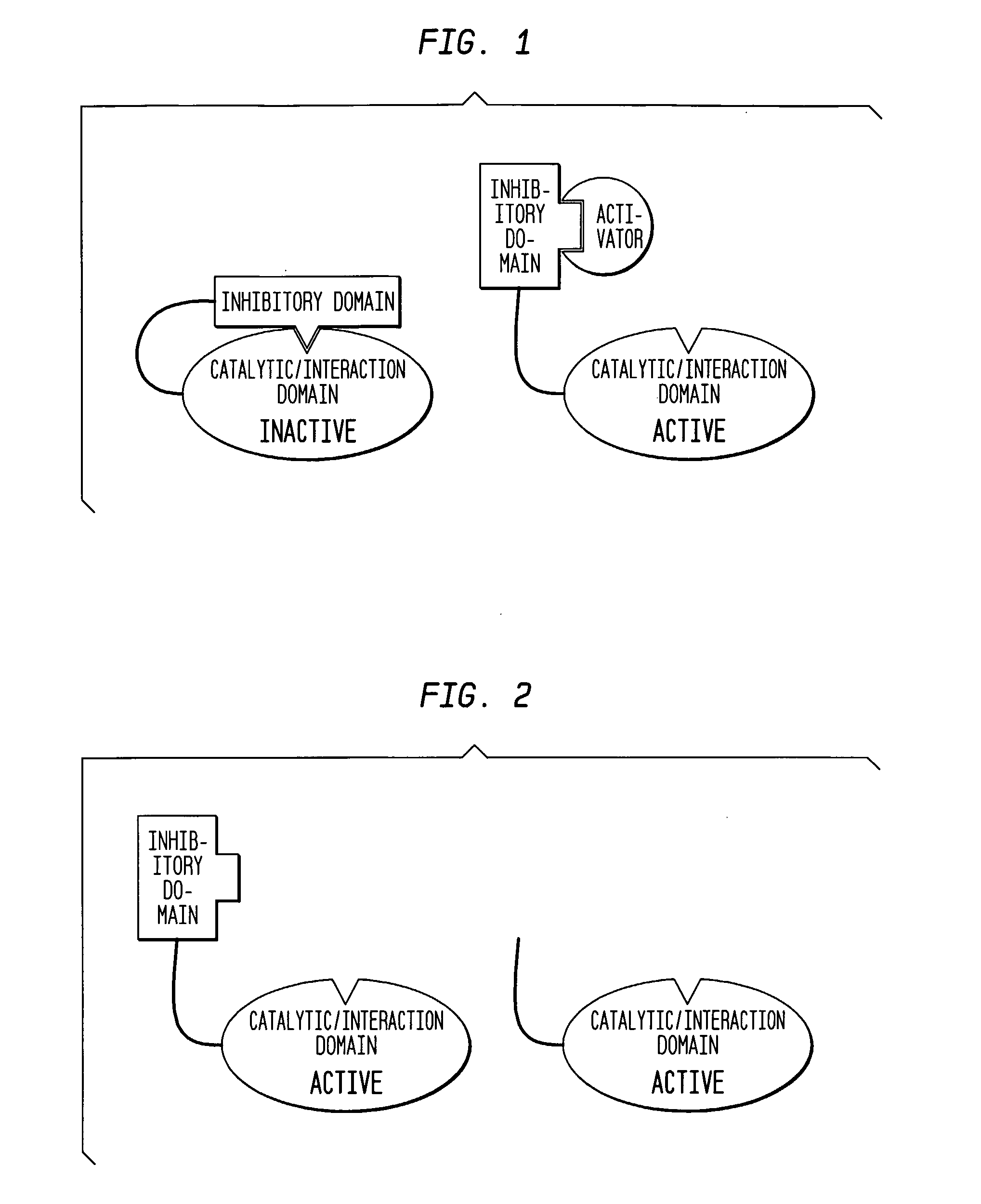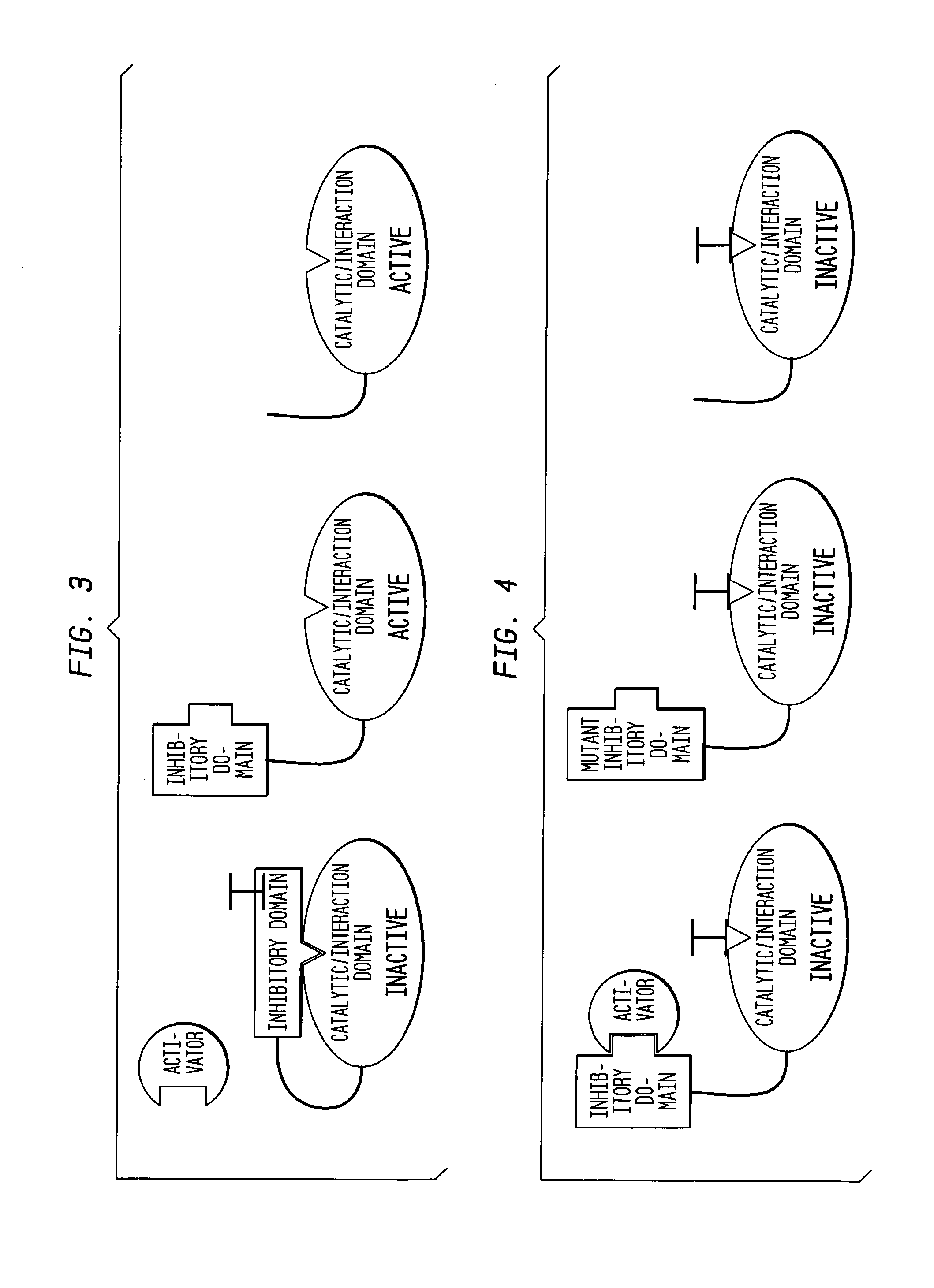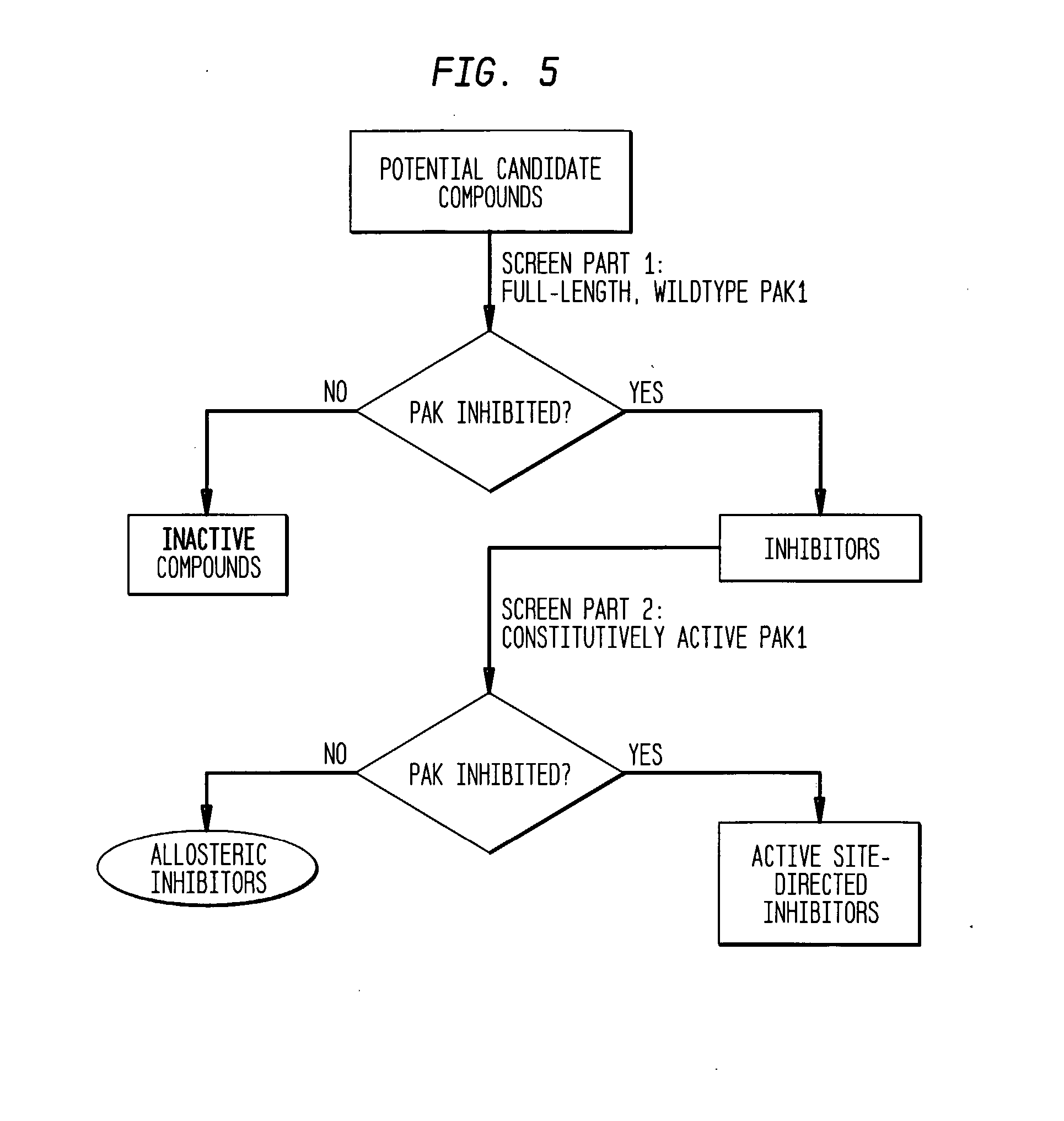Methods of screening for inhibitors of autoinhibited proteins
a technology of autoinhibition and protein, which is applied in the field of screening for autoinhibited protein inhibitors, can solve the problems of insensitivity to compound solvents or biophysical properties, the assay has not been developed for screening and identification of sufficiently selective inhibitors of many classes of kinases, and no sufficiently specific pak inhibitors have been identified using this approach, etc., and achieves any loss of accuracy or specificity.
- Summary
- Abstract
- Description
- Claims
- Application Information
AI Technical Summary
Benefits of technology
Problems solved by technology
Method used
Image
Examples
example 1
Description of the Assay
[0102] The present example provides a detailed description of one example of the many forms of the assay that may be used in identifying an inhibitory compound that maintains an autoinhibited state of an autoinhibited molecule of interest, such as an autoinhibited protein. The autoinhibited state of the molecule may be further described as a molecule that is in an unactivated, conformationally conserved state. Typically, the unactivated, conserved state of an autoinhibited protein has a native amino acid length and conformation.
[0103] The isolated kinase domain or full-length Pak1 in assay buffer is aliquotted into individual wells of a 384-well plate using a Bio-Tek MicroFill®. (8 μl / well). Individual candidate compounds are transferred into each well by manual transfer using disposable poly-propylene 384-pin arrays. These devices transfer ˜20 nl per pin. The kinase reaction is initiated by the addition (by MicroFill®) of a reaction mixture containing subs...
example 2
Screen for Allosteric Inhibitor of MLK3
[0105] A kinase domain (amino acid residues 115-384) of human MLK3, as well as full length human MLK3 cDNA (847 amino acids), are cloned into a His-tagging, baculoviral transfer vector such as those offered by Clontech® (Bac-to-Bac® system). A recombinant baculovirus may then produced by standard recombinant methods.
[0106] Sf9 cells were infected and the recombinant baculovirus amplified. The amplified virus is then used to produce the kinase domain and the full length form of MLK3. This is then purified by Nickel-agarose chromatography. Optimal conditions for the kinase assay are then established so that ˜75% of ATP is depleted within two hours of incubation with Cdc42-activated MLK3.
[0107] Two screens were then carried out as part of the screening method to identify candidate inhibitory compounds. Candidate compounds were provided using a small molecule library. In the first screen, each candidate compound was assayed against Cdc42-activat...
example 3
Screen for Allosteric Inhibitor of mDia1 (A Formin Family Protein)
[0109] The present example demonstrates the use of the double screen assay using a formin family protein. In this example, the formin family protein, mDia1, was used.
[0110] The C-terminal portion, mDia1 (mDia-C; a constitutive active form, comprising amino acid residues 549-1255 of human mDia1), as well as the inhibitory N-terminal portion (mDia-N; amino acids 1-548), was cloned into a GST-tagging, E. coli expression vector such as those offered by GE Healthcare® (pGex® system). E. coli were then transformed with the vector, and allowed to express the corresponding recombinant proteins. Both of the recombinant proteins expressed were then purified on glutathione-agarose beads according to the manufacturer's protocol.
[0111] Assay: mDia-C (constitutively active mDia) or a mixture of mDia-C, mDia-N, and RhoA (Rho-activated mDia) were aliquotted into 384-well reaction plates containing 2×XB buffer containing ATP, physi...
PUM
| Property | Measurement | Unit |
|---|---|---|
| volume | aaaaa | aaaaa |
| volume | aaaaa | aaaaa |
| luminescence | aaaaa | aaaaa |
Abstract
Description
Claims
Application Information
 Login to view more
Login to view more - R&D Engineer
- R&D Manager
- IP Professional
- Industry Leading Data Capabilities
- Powerful AI technology
- Patent DNA Extraction
Browse by: Latest US Patents, China's latest patents, Technical Efficacy Thesaurus, Application Domain, Technology Topic.
© 2024 PatSnap. All rights reserved.Legal|Privacy policy|Modern Slavery Act Transparency Statement|Sitemap



